Posted July 15, 2024 by Nicky in Reviews / 2 Comments
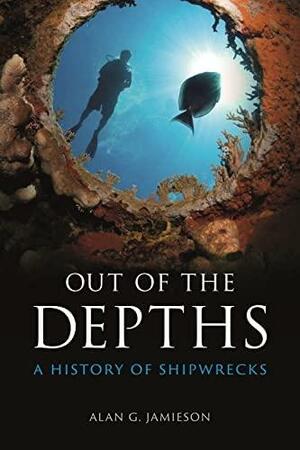
Out of the Depths: A History of Shipwrecks
Genres: History,
Non-fiction Pages: 320
Rating: 
Synopsis: Out of the Depths explores all aspects of shipwrecks across four thousand years, examining their historical context and significance, showing how shipwrecks can be time capsules, and shedding new light on long-departed societies and civilizations. Alan G. Jamieson not only informs readers of the technological developments over the last sixty years that have made the true appreciation of shipwrecks possible, but he also covers shipwrecks in culture and maritime archaeology, their appeal to treasure hunters, and their environmental impacts. Although shipwrecks have become less common in recent decades, their implications have become more wide-ranging: since the 1960s, foundering supertankers have caused massive environmental disasters, and in 2021, the blocking of the Suez Canal by the giant container ship Ever Given had a serious effect on global trade.
A highly illustrated voyage through shipwrecks ancient and contemporary.
There are parts of Alan G. Jamieson’s Out of the Depths which are fascinating, particularly in the last few chapters where he begins to talk in a bit more detail about excavation and ownership of wrecks. It does feel like the first chunk of the book — and the majority of it — is a long list with some scant details about as many wrecks as he could think of. There are some interesting examples, but it can get samey.
It did get more interesting as he got onto more modern wrecks, where we know more about the causes and the human factors, and can say more about survivors, who might be at fault, etc. At least, that’s how I feel, of course: if what fascinates you are the ships themselves, then this might be right up your alley. It’s hard to judge.
It felt a bit uneven, ultimately, and it wasn’t helped by the fact that it isn’t one of my particular interests. (I’m fascinated by underwater archaeology, but less fascinated by how things got underwater, I suppose.) But I can imagine it being a fascinating read and a good resource.
Rating: 3/5
Tags: Alan G. Jamieson, book reviews, books, history, non-fiction
Posted July 8, 2024 by Nicky in Reviews / 0 Comments

Petra: The Rose-Red City
Genres: History,
Non-fiction Pages: 128
Rating: 
Synopsis: Deep in the desert of Jordan lies the hidden city of Petra, one of the greatest marvels of the ancient world. Carved from rose-red rock, Petra’s monuments, dwellings and temples were for centuries the centre of a splendid civilization.
Later the city fell into ruin and its location was lost, until the Swiss explorer Johann Burckhardt rediscovered it in 1812. Petra’s mysterious beauty and dramatic story have long captivated the imaginations of historians and art lovers. Excavations by the authors Christian Augé and Jean-Marie Dentzer provide new information about this unique city.
Before reading this, I knew very little about Petra — I’d seen a few images of it, knew roughly where it was, etc, but I didn’t know anything about the Nabateans and their lives in their city. Christian Auge and Jean-Marie Dentzer’s Petra: The Rose-Red City is a pretty slim volume, but richly illustrated, and carefully contextualises the images in terms of what we know.
Which is less than I expected, to be honest. Not much archaeological work had been completed in and around Petra relative to the size of the ruins at around the time of writing, and preservation work had barely begun, if at all. I’d love to find something more up-to-date about Petra, but it was fascinating to get this glimpse.
That said, sometimes the organisation of text, images and captions left something to be desired. The pages are very busy, and the flow is unintuitive sometimes.
Rating: 3/5
Tags: book reviews, books, Christian Auge, history, Jean-Marie Dentzer, non-fiction
Posted July 5, 2024 by Nicky in Reviews / 0 Comments

The History of the World in 100 Animals
Genres: History,
Non-fiction,
Science Pages: 416
Rating: 
Synopsis: We are not alone. We are not alone on the planet. We are not alone in the countryside. We are not alone in cities. We are not alone in our homes. We are humans and we love the idea of our uniqueness. But the fact is that we humans are as much members of the animal kingdom as the cats and dogs we surround ourselves with, the cows and the fish we eat, and the bees who pollinate so many of our food-plants.
In The History of the World in 100 Animals, award-winning author Simon Barnes selects the 100 animals who have had the greatest impact on humanity and on whom humanity has had the greatest effect. He shows how we have domesticated animals for food and for transport, and how animals powered agriculture, making civilisation possible. A species of flea came close to destroying human civilisation in Europe, while the slaughter of a species of bovines was used to create one civilisation and destroy another. He explains how pigeons made possible the biggest single breakthrough in the history of human thought. In short, he charts the close relationship between humans and animals, finding examples from around the planet that bring the story of life on earth vividly to life, with great insight and understanding.
The heresy of human uniqueness has led us across the millennia along the path of destruction. This book, beautifully illustrated throughout, helps us to understand our place in the world better, so that we might do a better job of looking after it. That might save the polar bears, the modern emblem of impending loss and destruction. It might even save ourselves.
I really enjoy books that try to tell a history through a number of objects or people or, in this case, animals. Simon Barnes’ A History of the World in 100 Animals is more or less that, but it was marred for me by the fact that I couldn’t actually determine any governing organisation here, not even alphabetical. The stories did all pick up on the theme of how humans have interacted with animals, of course, but they didn’t lead into each other — animals which shared a similar theme could be separated by most of the book. They weren’t organised by type of animal, or location, or type of interaction… any organising principle that I could think of.
As such, it felt like a bit of a weird read, whipping from one topic to another. There are certainly ways to organise this kind of book (chronologically, for instance), which would’ve made it flow better.
That said, there are certainly some fascinating stories of human interaction with animals (and it is pretty much all about human interaction with animals in one way or another). Where I know my stuff, it’s accurate, though the utter lack of footnotes or bibliography is worrisome.
It’s beautifully presented, with matte colour images accompanying many (if not all) of the stories).
Rating: 3/5
Tags: book reviews, books, history, non-fiction, science, Simon Barnes
Posted July 3, 2024 by Nicky in Reviews / 2 Comments
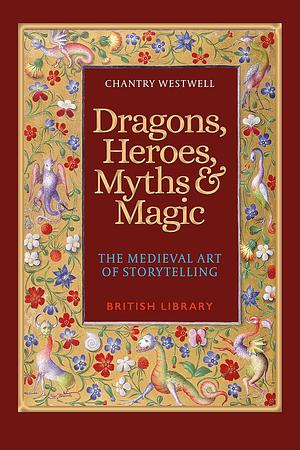
Dragons, Heroes, Myths & Magic: The Medieval Art of Storytelling
Genres: History,
Non-fiction Pages: 384
Rating: 
Synopsis: Journey through magical fairy tales, chivalric adventures, mystical events and celebrated foundation myths.
Trace how folk traditions and the manners of courtly love have developed through generations and across continents and how the most celebrated of ancient stories have become even more fantastical with age.
Chantry Westwell has used her profound knowledge of the Library’s illuminated manuscript collections to explore some of literature’s most enduring and multi-layered stories, together with the deep history of the books and chronicles in which they were first preserved. These powerful tales are presented alongside some of the most exquisite examples of art to survive from the eighth to the sixteenth centuries as medieval artists responded to the inspiring storylines with their own works of supreme beauty.
Chantry Westwell’s Dragons, Heroes, Myths and Magic is all about medieval manuscripts, and specifically their illustrations and illuminations. It focuses on how they were used to illustrate stories, and each chapter explains and attempts to contextualise the famous stories.
It’s unfortunate that Westwell presents some things as fact which I know to be merely theory (such as the origin of the word grail, and linking it with certainty to “Celtic” antecedents), and for some reason actually states as fact that the Arthurian legends are based around a real historical person (of which there is simply not one shred of proof). It would be hard to be an expert on all the different stories included in the manuscripts discussed here, and possibly Westwell should’ve stayed in her lane if she wasn’t sure — or, if these are her opinions, then she should have presented them as such. So, read with caution.
It’s also notable (and gross) that she privileges English sources over Welsh ones, listing Geoffrey of Monmouth and Thomas Malory ahead of ‘Culhwch ac Olwen’ — you could be forgiven for thinking that the Welsh tales came later, since she mentions them after a bunch of English ones, and gives them only a single paragraph.
That’d be all very well if she were merely confining her remarks to the illuminations, but of course she isn’t. Given that I cannot evaluate her level of knowledge on all of these topics, it’s difficult to know if I can recommend this book. The fact that it’s clearly for “laypeople” (so to speak) doesn’t excuse it; I don’t consider that a reason to be sloppy. Still, it’s a beautifully presented book, with full-colour illustrations, and makes for a lovely object.
Rating: 3/5
Tags: book reviews, books, Chantry Westwell, history, non-fiction
Posted June 27, 2024 by Nicky in Reviews / 1 Comment
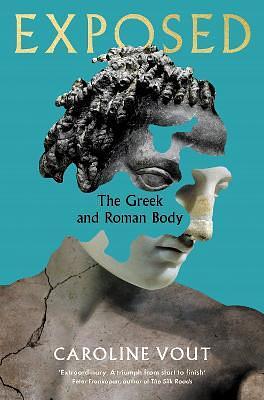
Exposed: The Greek and Roman Body
Genres: History,
Non-fiction Pages: 432
Rating: 
Synopsis: The Greek and Roman body is often seen as flawless - cast from life in buff bronze and white marble, to sit upon a pedestal. But this, of course, is a lie.
Here, classicist Caroline Vout reaches beyond texts and galleries to expose Greek and Roman bodies for what they truly were: anxious, ailing, imperfect, diverse, and responsible for a legacy as lasting as their statues. Taking us on a gruesome, thrilling journey, she taps into the questions that those in the Greek and Roman worlds asked about their bodies - where do we come from? What makes us different from gods and animals? What happens to our bodies, and the forces that govern them, when we die? Vout also reveals the surprising actions people often took to transform their bodies - from sophisticated surgery and contraception to body oils, cosmetics and early gym memberships.
You've seen the paintings, read the philosophers and heard the myths - now here's the classical body in all its flesh and blood glory.
First things first: as a physical object, Caroline Vout’s Exposed: The Greek and Roman Body is beautifully done. There’s lots of images included, arranged around the text in a usually sensible manner, and in colour. (I generally don’t ever look at the glossy included pages in books, in part because I wouldn’t retain any impression of the image while reading as I don’t have any kind of “mind’s eye”, so this worked especially well for me.) It’s really well presented in sections that make good sense.
In terms of the written content, I found most of it surprisingly familiar. Perhaps I shouldn’t be surprise: I’ve read plenty about the Greeks and Romans, if not directly about their bodies and their perceptions of their own bodies, and I did study classics up to A Level. But still, I’d kind of expected more surprises, e.g. around attitudes to disability… There were some titbits that were new to me, but mostly it wasn’t.
Which doesn’t mean it wasn’t a good summary: I found it an enjoyable read, and as I said, very well presented. Sometimes it felt like it was a little less in-depth than I’d like, and I didn’t (personally) hit that level of “huh, interesting!” that made me want to go and tell my wife about it, which is my real marker for interesting non-fiction, but it makes for a pretty good overview and summary, and is likely more surprising to people who’ve done less reading on related topics.
Rating: 4/5
Tags: book reviews, books, Caroline Vout, history, non-fiction
Posted June 20, 2024 by Nicky in Reviews / 0 Comments
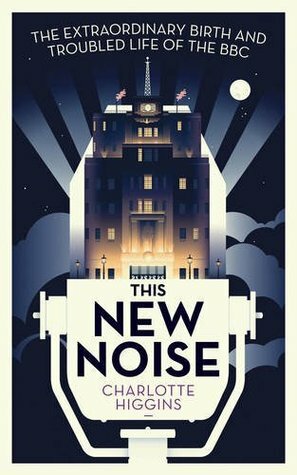
This New Noise: The Extraordinary Birth and Troubled Life of the BBC
Genres: History,
Non-fiction Pages: 288
Rating: 
Synopsis: 'The BBC, to my mind at least, is the most powerful British institution of them all, for, as well as informing, educating and entertaining, it permeates and reflects our existences, infiltrates our imaginations, forms us in myriad ways.'
Charlotte Higgins, the Guardian's chief culture writer, steps behind the polished doors of Broadcasting House and investigates the BBC. Based on her hugely popular essay series, this personal journey answers the questions that rage around this vulnerable, maddening and uniquely British institution. Questions such as, what does the BBC mean to us now? What are the threats to its continued existence? Is it worth fighting for?
Higgins traces its origins, celebrating the early pioneering spirit and unearthing forgotten characters whose imprint can still be seen on the BBC today. She explores how it forged ideas of Britishness both at home and abroad. She shows how controversy is in its DNA and brings us right up to date through interviews with grandees and loyalists, embattled press officers and high profile dissenters, and she sheds new light on recent feuds and scandals. This is a deeply researched, lyrically written, intriguing portrait of an institution at the heart of Britain.
The BBC is a British institution, and one which has been agonised over a lot. It sometimes feels like that’s something which happened only in recent years, but Charlotte Higgins’ This New Noise makes it clear that we’ve agonised over the BBC for as long as it has existed — and we’ve never had the halcyon perfect days that I think many people imagine. It’s always been what it is now, and as contentious as it has been now.
At times, I think Higgins tells the story a bit out of order, making references to events she explains properly later. This might work well for someone who has been alive for a bit more of the BBC’s lifespan, but I was not yet very engaged with the news for some of these! I also wasn’t really aware of the various directors-general, so just mentioning their names didn’t really contextualise things.
It’s still an interesting history, especially where it discusses people I didn’t know about at all, whose roles have been forgotten, like Hilda Matheson. She sounded pretty great (though of course it’s easy to make idols of people). All in all, an enjoyable read, and a useful point of view.
Rating: 3/5
Tags: book reviews, books, Charlotte Higgins, history, non-fiction
Posted June 13, 2024 by Nicky in Reviews / 2 Comments
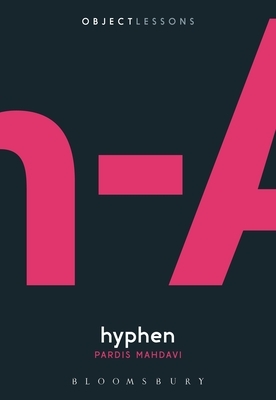
Hyphen
Genres: History,
Memoir,
Non-fiction Pages: 160
Series: Object Lessons Rating: 
Synopsis: To hyphenate or not to hyphenate has been a central point of controversy since before the imprinting of the first Gutenberg Bible. And yet, the hyphen has persisted, bringing and bridging new words and concepts.
Hyphen follows the story of the hyphen from antiquity - Hyphen" is derived from an ancient Greek word meaning "to tie together" - to the present, but also uncovers the politics of the hyphen and the role it plays in creating identities. The journey of this humble piece of connective punctuation reveals the quiet power of an orthographic concept to speak to the travails of hyphenated individuals all over the world. Hyphen is ultimately a compelling story about the powerful ways that language and identity intertwine.
Mahdavi - herself a hyphenated Iranian-American - weaves in her own experiences struggling to find her own sense of self amidst feelings of betwixt and between. We meet six other individuals who are each on a similar journey and watch as they find a way to embrace the space of the hyphen - rejecting the false choice of trying to fit into previously prescribed identities. Through their stories, we collectively consider how belonging only serves to fulfill the failures of troubled states, regimes, or institutions and offer possibilities to navigate, articulate, and empower new identities.
Pardis Mahdavi’s take on the Object Lessons series, Hyphen, is part-informative, part-memoir, and it’s a format that works well. I still far prefer the books that focus in on the object in question, but this one alternates the two quite well, using the one to help to illuminate the other. It’s probably one that will make a different kind of sense to Americans, since a good portion of the discussion is about “hyphenated Americans” (a phrasing I haven’t heard before, but which apparently has a history), and it delves into the history around that.
Not that immigrants in other countries don’t have similar stories, but I’d also hesitate to generalise. There are certainly parallels with “hyphenated British” experience, and it’s certainly not better here, just different (though increasingly the same all over, I guess; thanks globalisation).
Anyway, Mahdavi’s take on the hyphen wasn’t perhaps the detailed history of punctuation that I might find fascinating (though I have read a book about hyphens before, if memory serves), but it was interesting.
Rating: 3/5
Tags: book reviews, books, history, memoir, non-fiction, Object Lessons, Pardis Mahdavi
Posted June 12, 2024 by Nicky in Reviews / 0 Comments

The Vinyl Frontier: The Story of the Voyager Golden Record
Genres: History,
Non-fiction,
Science Pages: 288
Rating: 
Synopsis: The fascinating story behind the mission, music, and message of NASA's Voyager Golden Record -- humanity's message to the stars.
In 1977, a team led by the great Carl Sagan was assembled to create a record that would travel to the stars on NASA's Voyager probe. The Vinyl Frontier reveals the inside story of how the record was created, from the first phone call to the final launch, when Voyager 1 and 2 left Earth with a playlist that would represent humanity to any future alien races that come into contact with the probe. Each song, sound and picture that made the final cut has a story to tell.
The Golden Record is a 90-minute playlist of music from across the globe, a sound essay of life on Earth, spoken greetings in multiple languages, and more than 100 photographs, all painstakingly chosen by Sagan and his team to create an aliens' guide to Earthlings. The final playlist contains music written and performed by well-known names such as Bach, Beethoven, Chuck Berry and Blind Willie Johnson, as well as music from China, India and more remote cultures, such as a community in Small Malaita in the Solomon Islands.
Through interviews with all of the key players involved with the record, this book pieces together the whole story of the Golden Record. It addresses the myth that the Beatles were left off of the record because of copyright reasons and will include new information about US president Jimmy Carter's role in the record, as well as many other fascinating insights that have never been reported before. It also tells the love story between Carl Sagan and the project's creative director Ann Druyan that flourishes as the record is being created.
The Golden Record is more than just a time capsule. It is a unique combination of science and art, and a testament to the genius of its driving force, the great polymath Carl Sagan.
I don’t know how it took me so long to get round to starting Jonathan Scott’s The Vinyl Frontier, because the Golden Record (as included on Voyager 1 and 2) is a fascinating topic. I’m glad I finally got to it, because Scott writes a lovely biography of the Golden Record here (and a bit of a eulogy for Carl Sagan, too). He captures perfectly the naive hope of it, along with the genuine hard graft, and the difficult thinking to find ways to portray humanity that might mean something to an alien encountering it when we are gone.
He covers the human part of it as much as the technical side (or more so even), and his portrayal of the relationship between Carl Sagan and Ann Druyan is tender and sympathetic. I’ve no idea if it was as lovely and inevitable as he makes it sound, and I’m sure Carl Sagan was no saint, not even a pothead saint, but Scott’s clear admiration is actually enjoyable to read.
Thinking about the Golden Records does always make me imagine someone finding them. I often imagine, though, it’s more likely to be our own descendents. Regardless, what would they or those alien to us make of it all? I wonder.
Rating: 4/5
Tags: book reviews, books, history, Jonathan Scott, non-fiction, science
Posted June 6, 2024 by Nicky in Reviews / 0 Comments
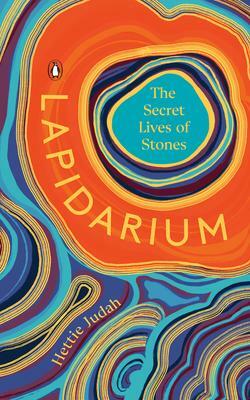
Lapidarium: The Secret Lives of Stones
Genres: History,
Non-fiction,
Science Pages: 336
Rating: 
Synopsis: Inspired by the lapidaries of the ancient world, this book is a beautifully designed collection of true stories about sixty different stones that have influenced our shared history
The earliest scientists ground and processed minerals in a centuries-long quest for a mythic stone that would prolong human life. Michelangelo climbed mountains in Tuscany searching for the sugar-white marble that would yield his sculptures. Catherine the Great wore the wealth of Russia stitched in gemstones onto the front of her bodices.
Through the realms of art, myth, geology, philosophy and power, the story of humanity can be told through the minerals and materials that have allowed us to evolve and create. From the Taiwanese national treasure known as the Meat-Shaped Stone to Malta’s prehistoric “fat lady” temples carved in globigerina limestone to the amethyst crystals still believed to have healing powers, Lapidarium is a jewel box of sixty far-flung stones and the stories that accompany them. Together, they explore how human culture has formed stone, and the roles stone has played in forming human culture.
Hettie Judah’s Lapidarium is a really beautifully presented book. Not just the cover (though yes, that’s gorgeous), but with the coloured tabs on the sides of pages, the organisation of it, the colour images, etc. I feel like the only thing is lacking there is more realistic images of the various stones, rather than just one canonical image — and especially images of some of the sculptures and examples the stories refer to.
The text itself varies a bit: some stones are more interesting than others. It luckily doesn’t feel like she’s just shoehorning everything into the same space: some stones get a couple more pages than others, while some are short and sweet.
Overall, it’s lovely to look at and there were some interesting titbits, but I feel like it gets more points for presentation than content! Not that the content is bad, either, but it’s very bitty and disconnected, there’s no overarching narrative, and that makes it a book designed for dipping in and out of more than anything.
Rating: 4/5
Tags: book reviews, books, Hettie Judah, history, non-fiction, science
Posted May 29, 2024 by Nicky in Reviews / 0 Comments

A Short History of Tomb-Raiding: The Epic Hunt for Egypt's Treasures
Genres: History,
Non-fiction Pages: 304
Rating: 
Synopsis: To secure a comfortable afterlife, ancient Egyptians built fortress-like tombs and filled them with precious goods, a practice that generated staggering quantities of artifacts over the course of many millennia—and also one that has drawn thieves and tomb-raiders to Egypt since antiquity. Drawing on modern scholarship, reportage, and period sources, this book tracks the history of treasure-seekers in Egypt and the social contexts in which they operated, revealing striking continuities throughout time. Readers will recognize the foibles of today’s politicians and con artists, the perils of materialism, and the cycles of public compliance and dissent in the face of injustice. In describing an age-old pursuit and its timeless motivations, A Short History of Tomb-Raiding shows how much we have in common with our Bronze Age ancestors.
Maria Golia’s A Short History of Tomb-Raiding is a slow, thorough thinking through of the different times and political/economic climates in which Egypt’s tombs have been plundered. Often we think of early archaeologists and antiquarians, or even current archaeologists where big institutions are trying to grab and keep priceless, culturally important objects, but Golia begins in the past.
It’s a bit of a dry read, ultimately, but it’s more sympathetic to the Egyptian tomb raiders who raid their own ancestors’ tombs than most accounts. Sure, they destroy context and thus knowledge — but there’s a reason they do what they do, mostly grinding poverty.
I’d honestly expected more commentary on European thieves, though; in one way this really centres the Egyptians themselves, but… European demand is also a huge part of that, and even men like Petrie (who was at least methodical) were digging among the bones of someone else’s ancestors, and not always sharing that knowledge with the descendents.
Rating: 3/5
Tags: book reviews, books, history, Maria Golia, non-fiction












